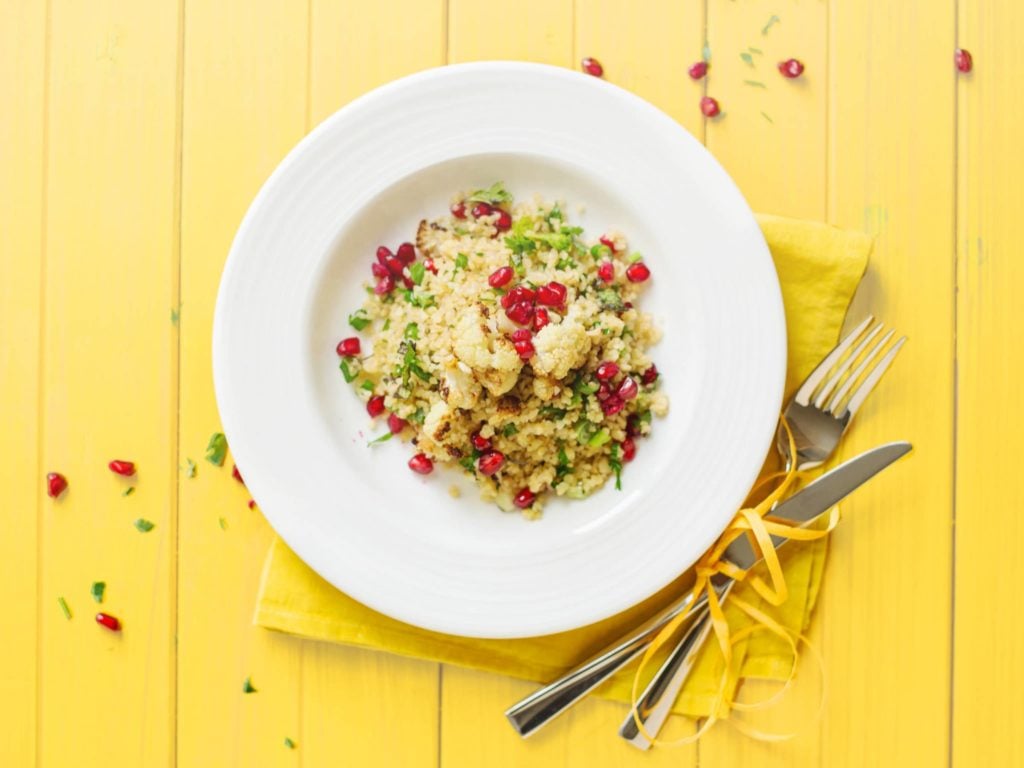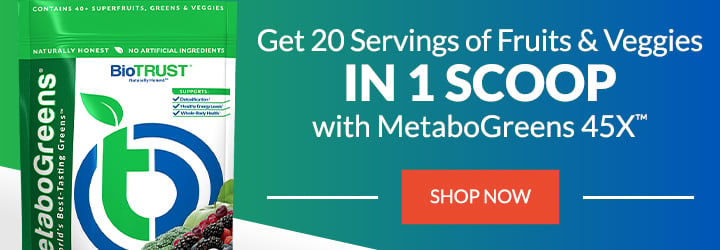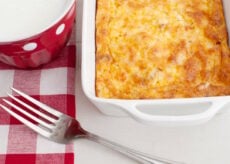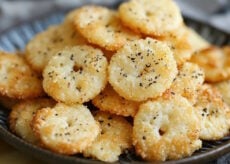5 Low-Carb Recipes That Are NOT Salads (you need to know)

In case you haven’t heard, low-carb diets and low-carb recipes are (once again) all the rage. And for good reason. While there is indeed debate as to what’s the “best” diet, the evidence is clear that low-carb diets (e.g., the ketogenic diet) are a viable, effective tool for weight management. In a meta-analysis published in The Lancet, researchers examined the results of dozens of randomized controlled weight-loss trials and concluded, “In weight loss trials, higher-fat [low-carb] weight loss interventions led to significantly greater weight loss than low-fat [high-carb] interventions.”1
Fun Fact: What exactly is “low carb?” Well, that’s a great question. According to a study published in the journal Nutrition & Metabolism, researchers defined a “low-carbohydrate diet” as one that provides less than 130g of carbs per day or less than 26% of calories from carbs.2 The most extreme example is a “very low carbohydrate ketogenic diet” (VLCKD), which typically restricts carbohydrates to < 30g per day. A VLCKD is very high in fat (~80% of calories) and moderate in protein (~20% of calories).
Now, if you’re like most people, when you hear the words “low-carb recipes” and “healthy” in the same breath, the first image that likely pops into your mind is salad. And when you imagine salad, you probably think “Borrring!” The truth is that you can make an incredibly creative and delicious array of salads, and in my house, they are anything but boring.
Having said that, I realize that not everyone is quite as fanatical about leafy greens or learning 5 different ways to make a salad. Instead, I going to provide you 5 healthy, low-carb recipes that are NOT salads, which you can make for lunch, dinner, and even breakfast!
5 Awesome Low-Carb Recipes

1. Egg Roll in a Bowl
To meet the demand for healthy, low-carb fare, you’ve likely seen the trend where restaurants are offering more traditional menus items, such as sandwiches and burritos, in bowls—ditching the high-carb bread and tortillas. While this is certainly a lower carbohydrate option, the movement has quite caught on with one of my favorite foods and popular appetizer: The egg roll.
So, I decided to come up with my own healthy, low-carb version, which delivers the deliciousness of the insides of the egg roll without all the carbs (the wrappers) or being deep-fried. That’s what I call low-carb, guilt-free awesomeness.
Ingredients:
- 1 pound organic ground pork (you can substitute ground chicken or organic lean ground beef)
- 1 head of cabbage, thinly sliced
- ½ medium onion, thinly sliced
- 1 tbsp cold-pressed sesame oil
- ¼ cup soy or tamari sauce
- 1 clove garlic, minced
- 1 tsp ground ginger
- 2 tbsp chicken broth
- Salt and pepper to taste
Directions:
- In a large pan or wok heated over medium heat, brown ground pork.
- Add the sesame oil and onion to the pan with browned ground pork and continue cooking over medium heat.
- In a small bowl, mix soy sauce, garlic, and ground ginger together and add to pan.
- Add the cabbage and chicken broth to the pan and continue cooking over medium heat, stirring frequently.
- Optional: Garnish with salt, pepper, and green onion.

2. Zoodles
Zoodles? No, I’m not talking about the latest in dog crossbreeding. I’m talking about replacing traditional high-carb pasta with noodles made from zucchini, one of our favorite health food swaps.
The zoodle craze doesn’t appear to be losing any steam; in fact, the trend is now trickling down to other veggies besides zucchini. For instance, I’ve been using my spiralizer (the name of the tool used to make noodles out of veggies) to make noodles out of yellow squash, sweet potatoes, carrots, cucumbers, bell peppers, and more, including some fruits (such as apples), which you’d likely want to limit if you’re following a low-carb diet.
Bonus Tip: Increase Your Greens Intake
Try experimenting with a variety of veggies to create a healthy, colorful, low-carb noodle bowl. Depending on what vegetables you choose, the possibilities for healthy toppings and sauces are seemingly endless. Here’s one of my favorite zoodle recipes.
Carroodles with Garlic Sauce
Ingredients:
- 1 large carrot
- 1 tbsp tahini
- 1 tbsp virgin coconut oil
- 3 tbsp lemon juice
- 1 tsp tamari sauce
- 1 tsp grated ginger
- 1 small clove garlic, grated
Directions:
- Using a spiralizer, create carrot “noodles” (carroodles) and place them in a bowl.
- Mix the remaining ingredients together in a bowl. This will be your dressing.
- Pour the dressing on carroodles and toss well.
- Top with fresh herbs, seeds, or nuts.

3. Cauliflower Pizza
When you think “low-carb,” pizza is probably not one of the first things that comes to mind. Indeed, with a crust made with high-carb, heavily refined flour, traditional pizza is a far cry from low-carb. In fact, many would argue that overconsumption of refined carbohydrates (like the flour in pizza crust) is to blame for increasing rates of obesity and myriad negative health outcomes.
In fact, in a commentary published in the prestigious American Journal of Clinical Nutrition, Harvard researcher and professor of Nutrition and Epidemiology Dr. Frank Hu said, “Refined carbohydrates are likely to cause even greater metabolic damage than saturated fat.”3 What’s more, numerous studies have linked consumption of these highly processed carbohydrates to obesity.4–6
Knowing that yet not being ignorant to how amazingly delicious pizza is, I wanted to find a way that we could have our “pie” and eat it too. Enter what I like to call the white vegetable wonder: Cauliflower. Move over kale, there’s a new superfood in town! By replacing the traditional refined flour crust with cauliflower, you’ll slash carbs and calories and dramatically boost the nutrient density of your pizza. From a nutrition standpoint, cauliflower’s got it going on!
Fun fact: The USDA has reported that 250 slices of pizza are consumed every second. That means that, on any given day, 13% of the population is eating ‘Za.
Cauliflower Pizza Crust
Ingredients:
- ½ head of cauliflower, coarsely chopped
- ½ cup grated parmesan cheese
- 1 egg, beaten
- seasonings of choice
- salt and pepper to taste
Directions:
- Preheat oven to 450F.
- Place the cauliflower in a food processor and blend until you achieve a rice-like texture.
- Fill a large pot with about an inch of water and bring to a boil. Put the cauliflower in a steamer insert and place in the pot. Allow cauliflower to steam for roughly 15 minutes, stirring continuously.
- Remove the cauliflower from the pot and place into a strainer. Once you’ve strained it, transfer it to a thin, clean dish towel, twist it up, and squeeze out ALL the remaining water. This is key.
- Place cauliflower rice in a large bowl and stir in grated parmesan cheese, egg, and seasonings until well blended.
- Transfer the mixture to a baking sheet and shape into desired pizza crust shape.
- Bake for 10-15 minutes until crust is golden brown.
- Remove from oven and add your favorite healthy toppings (e.g., tomato sauce or olive oil, fresh veggies, lean proteins, fresh mozzarella).
- Bake for an additional 10-15 minutes.

4. Cauliflower Tabouli
You say tabbouleh, I say tabouli. Regardless of how you spell this popular ethnic food, there is no better way to throw a party in your mouth than by combining fresh vegetables and herbs with a light and refreshing splash of fresh-squeezed lemon juice and red wine vinegar.
While traditional tabouli recipes call for wheat bulgur, which is a high-carb whole grain, this recipe once again takes advantage of “the white vegetable wonder”: cauliflower “rice.” I also added some fresh vegetables and herbs to take this traditional side dish to a whole new level. [Note that bulgur is a whole grain, and if you’re not restricting your carbohydrate intake, it’s a perfectly acceptable smart carb.]
Fun Fact: Traditional Lebanese tabbouleh resembled more of a salad, as the main ingredients were typically fresh herbs and tomatoes. Over the years, as this dish has become more popular, the ratios have changed with the amount of bulgur increasing. As a result, tabbouleh has transitioned from a salad or side dish to a heartier, more substantial meal.
Ingredients:
- ½ head cauliflower, finely chopped
- 1 tomato, diced
- 1 cucumber, diced
- ½ red onion, diced
- 1 clove garlic, finely chopped
- 1 jalapeno pepper, finely chopped
- 1 kale leaf, stem removed, finely chopped
- 1 tsp cilantro, finely chopped
- 1 tsp parsley, finely chopped
- 1 tsp mint, finely chopped
- Lemon juice
- Red wine vinegar
Directions:
- Using a food processor, blend the cauliflower (in batches, if necessary) into a rice-like texture.
- Put cauliflower rice into a large mixing bowl, add the remaining ingredients (except lemon juice and vinegar), and combine well.
- Blend together your dressing of 1 part lemon juice to 2 parts red wine vinegar, making enough to coat the mixture. Pour the dressing over the mixture in the large mixing bowl and toss to coat.
- Refrigerate for 1 hour to allow the flavors to marinate.
- Serve chilled.

5. Low-Carb Protein Shake
If you’re anything like me, you are constantly on-the-go. And that means you may not have time to drop what you’re doing and sit down to eat every single meal. Just because time may be a limiting factor doesn’t mean you have to abandon your low-carb meal plan or healthy eating altogether.
In less than two minutes, you can whip up a delicious, satisfying, low-carb protein shake. Not only will you avoid fast food, which isn’t really all that “convenient” for your health and waistline, a high-quality protein shake can help keep hunger and cravings at bay while boosting energy levels and metabolism.
This recipe serves as a template: My tried and true meal replacement shake. I’ve left the ingredients somewhat vague, and you are welcome to use whatever you have on hand, provided you stay within the recommended portion sizes. If you would like examples of my favorite concoctions or have some of your own, let us know in the comments section below.
Ingredients:
- 2 scoops of BioTrust Low Carb
- 1 – 2 fistfuls of veggies (e.g., spinach) [Note: A great substitute is a powdered greens/superfood supplement. Hands down, my favorite is MetaboGreens 45X.
- 1 – 2 thumb-sized portion(s) of healthy fats (e.g., nuts, nut butters, seeds, coconut oil)
- 8 ounces liquid (e.g., water, unsweetened almond milk, coconut milk, green tea)
- Ice to preference
Directions:
- Place all the ingredients in a blender and blend well. If you don’t have a blender available, you can use a shaker bottle. Just mix the liquid with your BioTrust Low Carb and MetaboGreens 45X and enjoy some almonds, walnuts, or other nuts alongside your low-carb shake.
- For best results, enjoy immediately after preparing.







